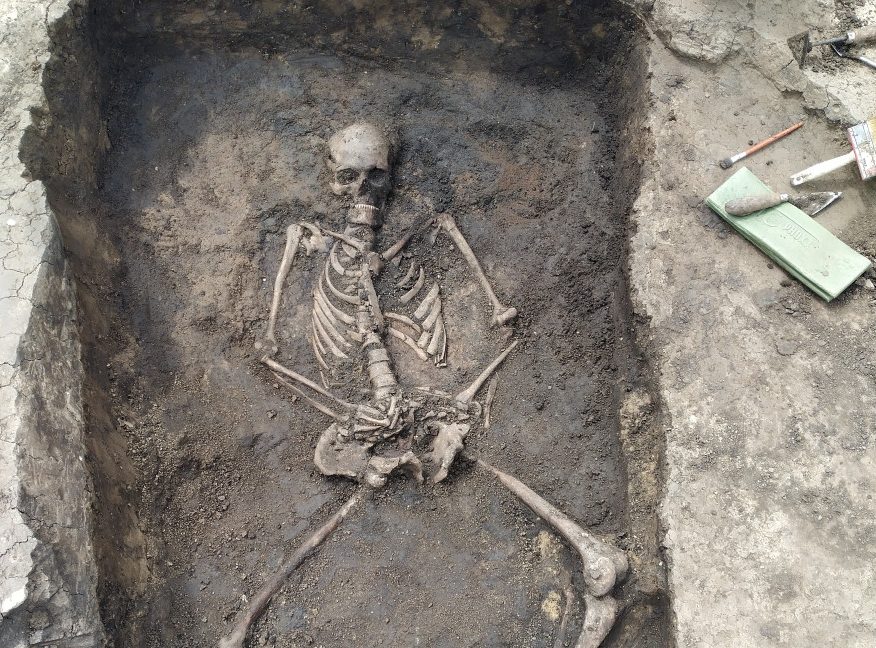Archaeologists have found an extraordinary burial site in the vicinity of Hajdúböszörmény-Pród, in Vidi-zug, the Déri Museum informed.
The work of the archaeologists could be compared to peeling off the skin of an onion, because above the main/central grave of the excavated barrow (kurgan), the specialists excavated several layers of Iron Age (Scythian) and conquest-era graves until they reached the burial of a representative of the Jamnaya culture, a nomadic shepherd.
The culture of the Yamnaya, i.e. the people of the pit-buried kurgans, was a late Copper Age – early Bronze Age culture that spread from the northern coast of the Caspian Sea, through the northern coast of the Black Sea to the Carpathians. From there it migrated through Dobruja to the Western Balkans (Bulgaria), Oltenia, and from there following the line of the Lower Danube to the territories of Vojvodina and the Great Plain. Their first groups reached the Great Plain between 3100-3000 BC, mostly occupying the Tiszántúl region.
The YMPACT ERC Project research group led by Prof. Volker Heyd of the University of Helsinki, the archaeological team working in cooperation with the Hajdúsági Museum and the Déri Museum, was a great experience that the central tomb – despite the subsequent burials and disturbances – survived intact. Thus, the excavation will surely enrich the image of the first (prehistoric) nomadic people group that occupied Eastern Hungary with much valuable material finds and knowledge.


















